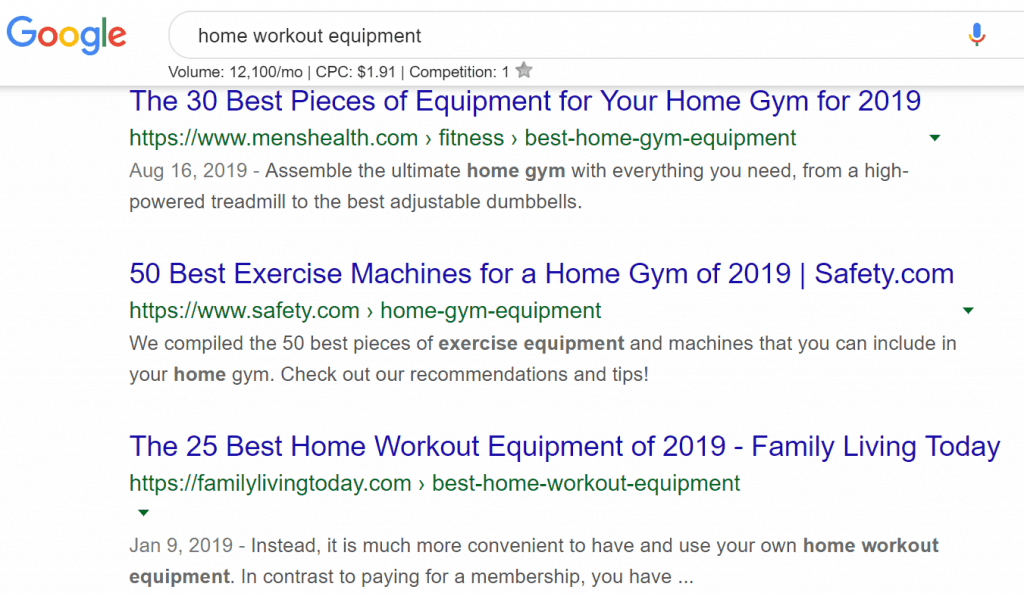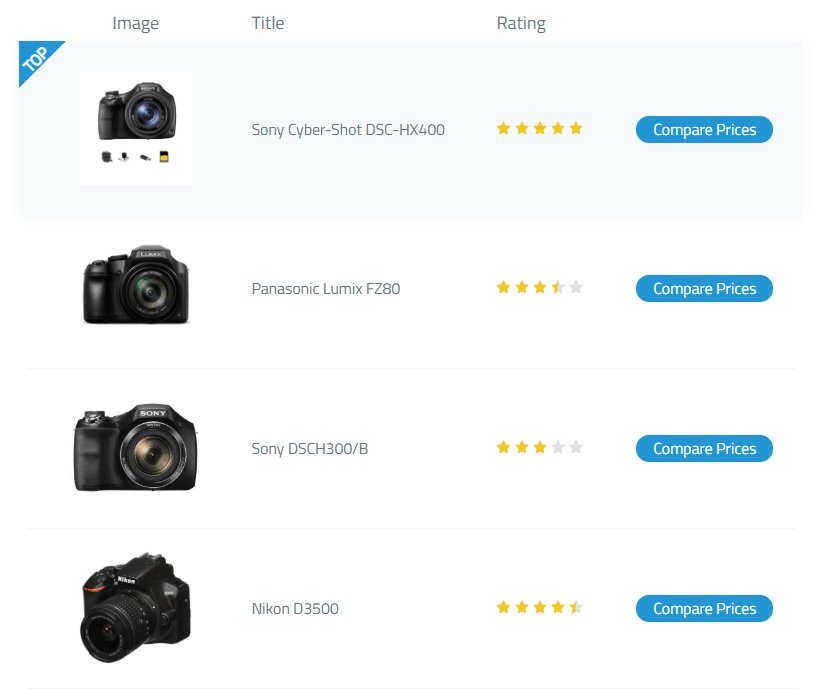Last Updated on

Writing a profitable (keyword: profitable) affiliate blog post doesn’t need to feel overwhelming! But for a beginner, it can feel completely confusing and downright impossible.
But let me tell you: it’s not impossible. Nor do you need hundreds of thousands of visitors to your blog in order to find success with affiliate marketing.
Today, I want to talk about affiliate marketing for beginners and what you need to do in order to ensure you increase your affiliate earnings without needing to increase your traffic!
What is Affiliate Marketing?
Affiliate marketing is where you earn a commission when someone purchases a product based upon your recommendation. If you plan to create blog posts with affiliate links, you will likely be writing up some type of review on your experience with a product and linking to that product via your affiliate link.
When someone clicks on that link and makes a purchase through your link, you earn a commission.
Where to Sign up For Affiliate Marketing for Beginners?
Whether you are a beginner in affiliate marketing or an experienced affiliate marketing, there are lots of platforms you can sign up on that will connect you with various products and companies.
I personally like using Amazon’s affiliate program because most of the products I use can be found there! But there are tons of other places you can sign up with. Check out my list of affiliate programs for beginner bloggers to get started.
A couple of my favorites are:
Most places require you have a blog or a website before you can sign up to be an affiliate. I have an easy guide to starting a profitable blog that you can follow along with if you don’t have a website quite yet.
Affiliate Marketing for Beginners: Writing a Profitable Affiliate Post
When most beginners get started with affiliate marketing, they make the mistake of adding their affiliate links to as many blog posts as possible without putting much strategy behind it. There’s a reason why this won’t work and let me show you why with some stats.
The average affiliate conversion rate is 0.5%-1%. Let’s say you have an affiliate link for a book that you are recommending to your audience, which you earn $1 for from every affiliate purchase.
Now, if your goal is to make $50 per month from that affiliate link alone, you would need to have 5,000-10,000 people visiting THAT ONE blog post with your affiliate link in order to make $50 in affiliate sales (based upon the average conversion rate I mentioned above).
I think this point is incredibly important to touch on first because a lot of beginner bloggers feel discouraged when they aren’t making very much through their affiliate links, however, realistically you will need to have a plan in place (and write your blog posts strategically) in order to try and bump up those conversion rates!
So the obvious strategy is to increase your blog traffic in order to earn more through affiliate links, however, I want to talk about how to write a profitable affiliate blog post that will have higher conversion rates, so you don’t need to increase your traffic to make more.
Because ain’t nobody got time for a 0.5% conversion rate, and the higher your conversion rates are, the less traffic you need to begin earning your commissions!
Step 1: Optimize Your Posts for Search Engines
If you want your affiliate income to increase, you need to rank high in search. You need to know about search engine optimization (SEO) and how to properly optimize your posts.
Here’s why SEO works and is a great affiliate marketing strategy.
People go to Google and other search engines to solve their problems. They are actively looking for something to purchase, as opposed to social media, where the user isn’t in “buyer mode.”
For example, let’s say you have an affiliate link for at-home workout equipment. if you share your affiliate link on Instagram, the people who see it aren’t likely going to be searching for something to buy. Your conversion rate will be fairly low.
However, if that same affiliate link is used in a blog post titled “The Best Home Workout Equipment”, someone who searches Google for “best home workout equipment” is clearly looking to buy! When they search on Google and find your blog post (because you’ve optimized it) they are going to be more likely to purchase from your affiliate links.
Let’s take a look at this example in action:

All of those search results yield blog posts. And those blog posts contain affiliate links to the products they are talking about. At roughly 12,000 monthly searches for this particular query, blog posts that land on the first page can make an incredible amount of passive income simply by optimizing their blog posts for SEO.
Step 2: Give People A Reason to Click Through
When I first began affiliate marketing, I threw my affiliate links wherever I possibly could, thinking that people would click, buy, and I’d make a ton of money.
But that never happened. I mean, these were products I loved and they would be able to help out my audience! How come people weren’t buying them?
I began to think that affiliate marketing wasn’t working for me because, at the time, I didn’t have thousands of monthly readers.
But the reality was that I just didn’t have a strategy.
By adding my affiliate links into my blog posts without a strategy, I wasn’t giving people a reason to click through on my affiliate links! In other words, they didn’t need the products I was promoting to them as much as I thought they did.
So I decided to change my strategy and I began to target people who needed the products I was promoting by using affiliate links in two types of blog post formats:
- An “end-of-the-sales-funnel” format
- A well-researched product comparison
- A “how-to tutorial” format
This strategy partnered with SEO is the secret sauce for making more money with your affiliate links.
Target The End of the Sales Funnel
When someone is ready to make a purchase, they are near the end of the sales funnel. They’ve identified a need and are looking for a product or service to satisfy that need.
Think back to your last purchase – when you were ready to buy something online, what was the last step you took prior to actually purchasing the product?
You probably completed some research and looked up product reviews! Generally, a user will go through some type of research before they buy.
So knowing that, which blog post will likely have a higher chance of converting:
- Why Your Blog Should be Self-Hosted
- Siteground versus Bluehost: Which Should You Choose?
That’s right – the second blog post will have a higher chance of converting. Someone who is looking up reviews on either Siteground hosting or Bluehost hosting will come across it as they search for more information, and if your post provides them with the information they are looking for they will likely click on your affiliate link and make the purchase based upon your recommendation.
The first blog post (Why Your Blog Should be Self-Hosted) doesn’t target those who are looking to purchase hosting quite yet…it’s more of an educating-type blog post with the aim to educate the reader on what hosting is.
They certainly aren’t ready to buy hosting yet, however!
Related:
- How to Start a Profitable Blog
- Ways to Make Passive Income Blogging
- Best Affiliate Programs for Bloggers
- Making Money With Affiliate Links on Pinterest
The first post (10 Web Hosting Companies To Host Your Blog With) is more for someone who is just beginning their research and isn’t looking to make any purchases (quite yet).
Well-Researched Product Comparisons
Someone who is beginning their research for a new product can still convert if given the right information.
A product comparison blog post is a piece of content that compares the top products for a particular query and helps the reader find something that suits their needs.
For example:
- The 10 Best Sewing Machines for Beginners
- The 5 Best Tablets for Graphic Designers
- The 10 Best Running Shoes for Marathon Runners
These types of blog posts target someone who is closer in the middle of the sales funnel: they are slightly past the initial stage, however, they aren’t ready to buy. They still need lots of information to help guide them to a purcahse.
When you compare many different products, you’re helping the reader to make a decision without having to scour the internet. In other words, all the information they need about the products they are searching for should be included in your blog post.
Tables are incredibly handy to include in these types of posts:

The table above compares different products in a quick visual snapshot.
Write “How-To’s”
How-to tutorials are also another great blog post format that you can write to help increase your conversions. When I first began writing tutorials, I’d write them based upon a specific product. But that’s not a good strategy…
When creating how-to’s and tutorials, make sure your tutorial isn’t product-specific. Let me explain why.
Usually, if someone is searching for a tutorial on a specific product, they’ve already got the product! I certainly wouldn’t search for “How to Use a Fuji Film X-T10 Camera” if I didn’t already have a Fuji Film X-T10 camera! I also wouldn’t search for “how to use Mailchimp” if I didn’t already have a Mailchimp account.
You get the idea.
Instead, you could write a tutorial on how to start an email list! Someone looking for step-by-step instructions on how to start an email list probably doesn’t have all the tools required quite yet, so that blog post would convert at a much higher rate.
Another example of this could be a DIY tutorial for creating paper flowers. Within the tutorial, you could link to all the supplies and specialty paper that is required in order to create the flowers. Sure, some people who will come across the article might already have the supplies but many of them won’t have all the supplies required and need to make additional purchases.
Step 3: Share Your Personal Story
On top of writing your blog post in a format that has a higher chance of converting, you still want to include your personal testimonial and tell a story of why a particular product has worked well for you, and why your reader should purchase it above the many other options they have.
Stories have the potential to increase conversion rates and are a powerful way to connect with your audience on a deeper level.
Telling your own personal experience with a product or service can help you increase your affiliate sales.
Step 4: Use Quality Photos (When Necessary)
If you are writing a product review, including photos of your product being used by you can help your reader envision what their life might look like if they purchase said product.
When it comes to blogging and product photography, there are certain cameras for bloggers that I recommend using in order to snap the perfect photo!
In Conclusion: Affiliate Marketing for Beginners
If you want to make more passive income through affiliate marketing, it’s important to think about your audience and where they are in the sales funnel. Those posts then must be optimized for search engines if you truly want a passive income strategy.
This article may include affiliate links. As an Amazon Associate I earn from qualifying purchases.

Dana Nicole is an award-winning freelance writer for MarTech/SaaS who was rated one of the best SaaS writers by Software World. She specializes in writing engaging content that ranks high in search engines and has been featured in publications like Semrush, ConvertKit, and Hotjar.
Dana holds a Bachelor’s degree in Business Administration and has over 15 years of experience working alongside national brands in their marketing departments.
When Dana’s not working, you can find her dancing en pointe, cooking up new recipes, and exploring the great outdoors with her two big dogs.


This was one of the most helpful article because it is full of specific action step that can be implemented right away. I will certainly be implementing many of your suggestions on my own blog.
Very helpful post. I now realize the number of mistakes I was making on my blog. I think I am in a need of a strategy. Thanks for letting me know.
Glad it helped you, Ekta! If you have any questions or would like some resources, let me know and I can pull some together to help you.
Thank you so much <3 really helpful!!!!
Thanks for this extremely actionable advice!
I’ve just gotten started with affiliate marketing. This will help me to be more targeted and strategic with my blog post writing.
Amazing insights for a beginner like me….Iḿ highly motivated now….Thanks a ton